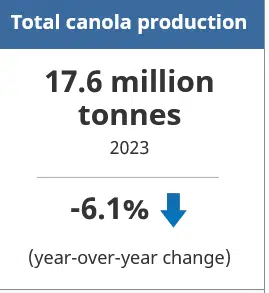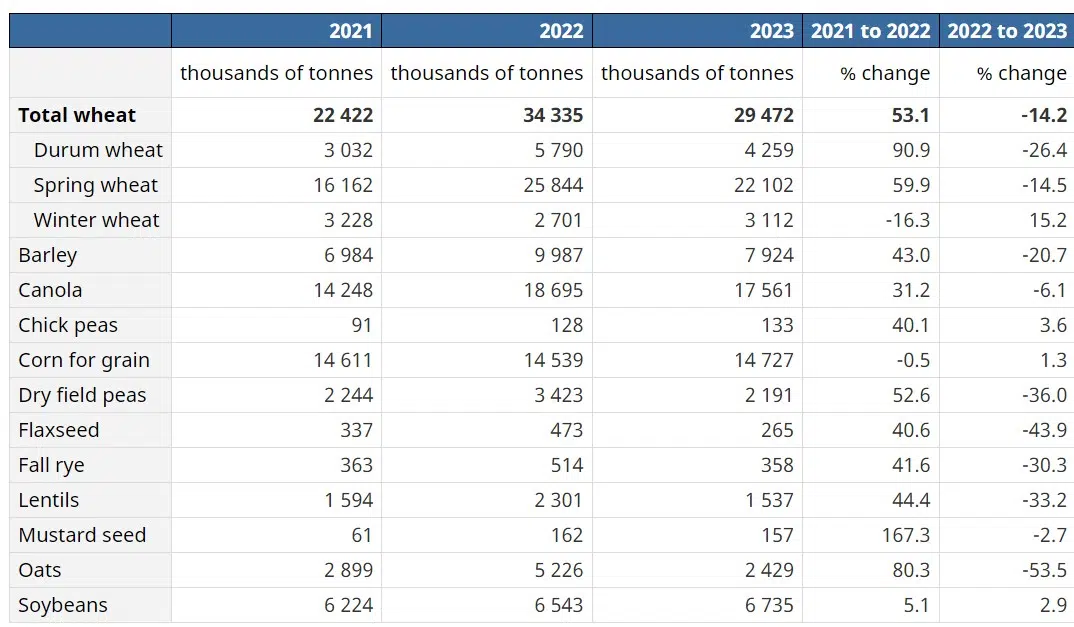
Statistics Canada says agro-climatic and satellite data are pointing to less grain and oilseed production compared to last year.
The federal agency has released its first crop estimates for 2023.

National spring wheat production is pegged at 22.1 million metrics tonnes based on an average yield of 42.6 bushels an acre. The production estimate is 14.5 per cent lower than last year, while the spring wheat yield would be down 20 per cent. Dry conditions over a significant part of Saskatchewan and Alberta are the main reason. In Saskatchewan, spring wheat production is being pegged at 8.6 million tonnes—-down 19.6 per cent while the average yield is 35.1 bushels an acre.
Statistics Canada believes Canadian canola production will be 6.1 per cent lower than last year at 17.6 million tonnes. The national average canola yield is forecast at 35.4 bushels an acre. Saskatchewan is expected to produce 6.3 per cent less canola at 9.1 million tonnes. Canola yields are projected to decrease 13.9 percent to 32.7 bushels an acre in our province. Meantime, the average canola yield in Alberta is expected to be higher than last year at 38.8 bushels an acre. while Manitoba comes in at 39.2 bushels an acre.
As for the pulse crops in Saskatchewan, the average yield for lentils is expected to fall nearly 22 per cent to 919 pounds per acre. That would leave total production at 1.3 million—down 33 per cent.
The Saskatchewan pea crop is estimated at 1.1 million tonnes—down about 29 per cent from last year. Harvested area is down more than 14 per cent, while the average pea yield is expected to be 26.2 bushels an acre—down six bushels per acre from 2022.
Barley production in Saskatchewan is forecast to be 2.5 million tonnes, down about 30 per cent from last year. The average yield is expected to be 44.4 bushels an acre.
Oat acreage was down substantially this year—nearly 50 per cent. As a result, oat production is forecast to plummet 64 per cent to 924-thousand tonnes making it the smallest oat crop in more than a decade. The average yield will be much lower as well—down 31 per cent to 68 bushels an acre.




















